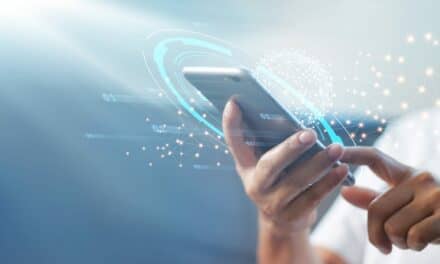Smartphones equipped with a deep learning algorithm are capable of detecting blood oxygen saturation levels down to 70%, according to a proof-of-principle study published in npj Digital Medicine.
The technique involves having participants place their finger over the camera and flash of a smartphone, which uses a deep-learning algorithm to decipher the blood oxygen levels from the blood flow patterns in the resulting video, researchers at University of Washington and University of California San Diego say in a statement.
The team recruited six participants ranging in age from 20 to 34. Three identified as female, three identified as male. One participant identified as being African American, while the rest identified as being Caucasian.
According to the study, each participant breathed in a controlled mixture of oxygen and nitrogen to slowly reduce oxygen levels over the course of 15 minutes. For all six participants, the team acquired more than 10,000 blood oxygen level readings between 61% and 100%.
To gather data to train and test the algorithm, the researchers had each participant wear a standard pulse oximeter on one finger and then place another finger on the same hand over a smartphone’s camera and flash. Each participant had this same set up on both hands simultaneously.
The researchers used data from four of the participants to train a deep learning algorithm to pull out the blood oxygen levels. The remainder of the data was used to validate the method and then test it to see how well it performed on new subjects.
According to researchers, the smartphone correctly predicted whether the subject had low blood oxygen levels 80% of the time.
“The camera is recording a video: Every time your heart beats, fresh blood flows through the part illuminated by the flash,” says senior author Edward Wang, who started this project as a UW doctoral student studying electrical and computer engineering and is now an assistant professor at UC San Diego’s Design Lab and the Department of Electrical and Computer Engineering, in a statement.
“The camera records how much that blood absorbs the light from the flash in each of the three color channels it measures: red, green and blue,” says Wang, who also directs the UC San Diego DigiHealth Lab. “Then we can feed those intensity measurements into our deep-learning model.”
“Smartphone light can get scattered by all these other components in your finger, which means there’s a lot of noise in the data that we’re looking at,” says co-lead author Varun Viswanath, a UW alumnus who is now a doctoral student advised by Wang at UC San Diego, in a statement. “Deep learning is a really helpful technique here because it can see these really complex and nuanced features and helps you find patterns that you wouldn’t otherwise be able to see.”
The team hopes to continue this research by testing the algorithm on more people.
“One of our subjects had thick calluses on their fingers, which made it harder for our algorithm to accurately determine their blood oxygen levels,” Hoffman says. “If we were to expand this study to more subjects, we would likely see more people with calluses and more people with different skin tones. Then we could potentially have an algorithm with enough complexity to be able to better model all these differences.”
But, the researchers said, this is a good first step toward developing biomedical devices that are aided by machine learning.
“It’s so important to do a study like this,” Wang says. “Traditional medical devices go through rigorous testing. But computer science research is still just starting to dig its teeth into using machine learning for biomedical device development and we’re all still learning. By forcing ourselves to be rigorous, we’re forcing ourselves to learn how to do things right.”
Another benefit of measuring blood oxygen levels on a smartphone is that almost everyone has one.
“This way you could have multiple measurements with your own device at either no cost or low cost,” says co-author Matthew Thompson, professor of family medicine in the UW School of Medicine. “In an ideal world, this information could be seamlessly transmitted to a doctor’s office. This would be really beneficial for telemedicine appointments or for triage nurses to be able to quickly determine whether patients need to go to the emergency department or if they can continue to rest at home and make an appointment with their primary care provider later.”
Photo: ID 125627420 © Phawat Topaisan | Dreamstime.com.





